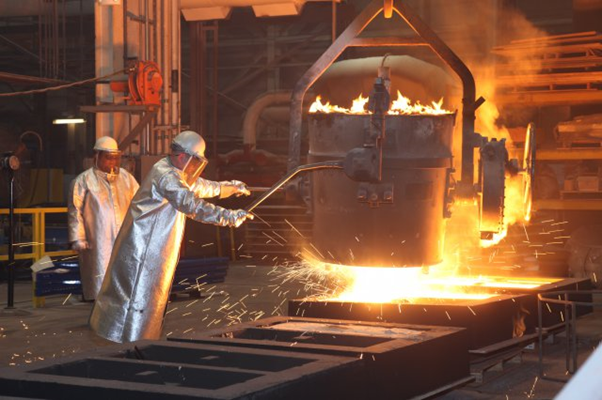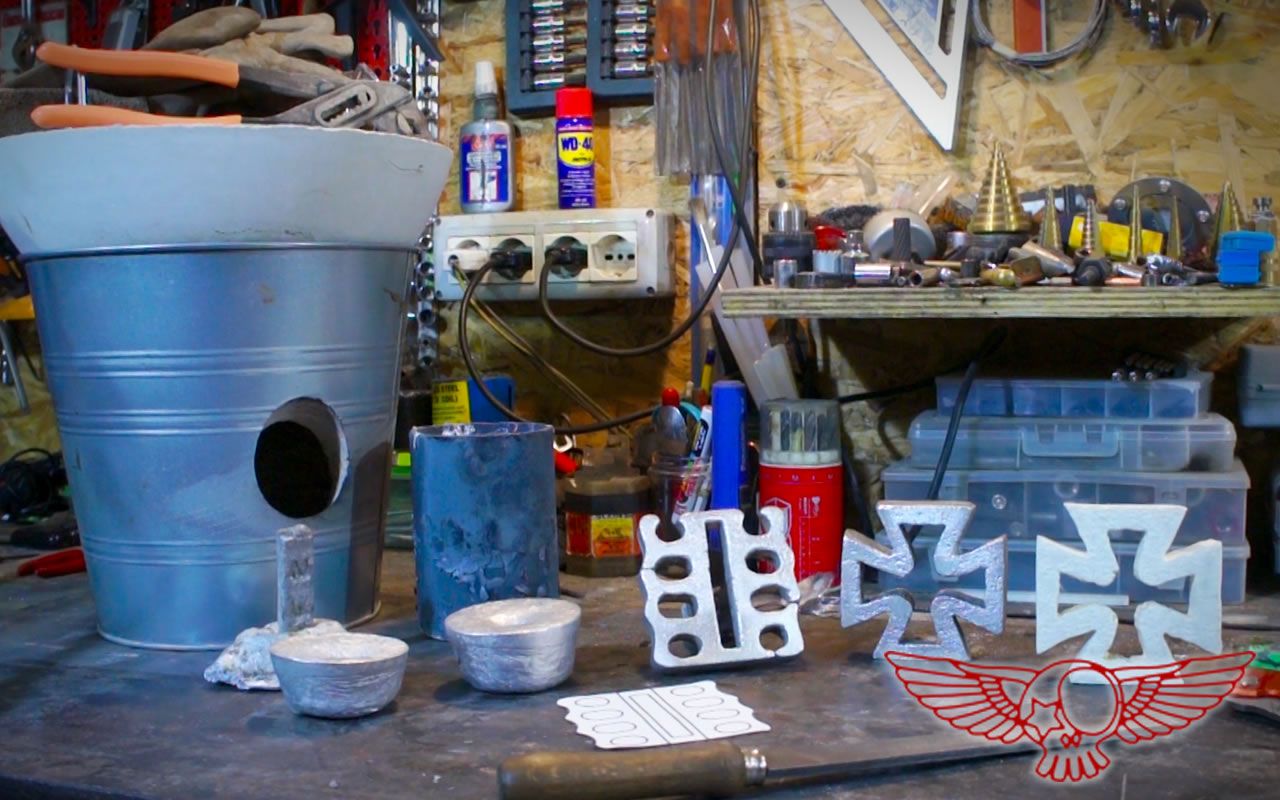3D printing innovations shaping Aluminum Foundry technology
Understanding the Relevance of Aluminum Foundry in the Aerospace and Automotive Industries
Aluminum foundries are integral to the aerospace and auto markets. They provide necessary lightweight elements that contribute to overall effectiveness and efficiency. The special properties of aluminum offer distinct advantages in manufacturing. As developments in modern technology and sustainable practices arise, the duty of these foundries is evolving. Comprehending these factors raises essential inquiries regarding the future of transportation and technology. What implications do these developments hold for the industries at huge?
The Role of Aluminum Foundries in Manufacturing Lightweight Parts
Aluminum foundries play an essential duty in the aerospace and vehicle sectors by producing lightweight components that enhance performance and fuel efficiency. The demand for lighter materials has actually surged as manufacturers seek to minimize total car weight, resulting in boosted fuel economic climate and lower discharges. Aluminum's distinct residential properties, consisting of high strength-to-weight proportion and deterioration resistance, make it an excellent selection for different applications.
Elements such as engine blocks, transmission housings, and architectural aspects take advantage of aluminum's malleability and ease of casting, giving the needed toughness while decreasing weight. In addition, aluminum's recyclability aligns with sustainable manufacturing practices, better driving its fostering in these fields. Shops utilize specific techniques to assure optimal product buildings, promoting advancements in layout and technology. Inevitably, aluminum foundries are essential in fulfilling the progressing demands of aerospace and vehicle industries, adding to innovations in safety and security, efficiency, and ecological responsibility.
Advanced Casting Techniques Made Use Of in Aerospace and Automotive Applications
In the aerospace and automotive industries, progressed spreading techniques have come to be necessary for enhancing efficiency and efficiency. Accuracy casting techniques, together with lightweight alloy technologies, make it possible for the production of elements that satisfy stringent industry requirements. Furthermore, the combination of additive manufacturing better changes design opportunities, permitting higher personalization and intricacy in parts.
Precision Casting Techniques
While sectors such as aerospace and vehicle significantly need high-performance components, precision casting approaches have actually emerged as crucial methods to fulfill these requirements. These methods, including financial investment spreading and die casting, deal phenomenal dimensional accuracy and surface area finish, vital for elements subjected to extensive operational conditions - Aluminum Foundry. Financial investment spreading permits complex layouts and complex geometries, making it possible for the manufacturing of lightweight yet durable components. Die casting, on the various other hand, guarantees high quantity production with regular high quality and reduced lead times. Both techniques help with the efficient use materials, minimizing waste and improving sustainability in producing processes. As the demand for cutting-edge services proceeds to grow, accuracy casting methods play a critical duty beforehand the capabilities of aluminum foundries within these critical industries
Lightweight Alloy Advancements
As the aerospace and vehicle sectors aim for enhanced performance and performance, technologies in light-weight alloys have ended up being increasingly considerable. These alloys, that include progressed aluminum-lithium and magnesium-based make-ups, provide remarkable strength-to-weight ratios, making it possible for suppliers to create parts that are both resilient and light-weight. The fostering of these products not just enhances fuel effectiveness yet also lowers greenhouse gas emissions, straightening with global sustainability goals. Advanced spreading strategies, such as die spreading and investment casting, have actually been optimized to work with these lightweight alloys, enabling detailed styles and complicated geometries. This adaptability enhances the functionality and performance of parts utilized in critical applications, from airplane frames to automobile structures, strengthening the function of aluminum foundries in driving market technology.
Additive Production Combination
Additive manufacturing has actually become a transformative force in the aerospace and auto markets, effortlessly incorporating with advanced casting techniques to boost manufacturing capabilities. This assimilation permits for the creation of complicated geometries that conventional techniques struggle to attain, substantially improving style flexibility. By incorporating additive processes with aluminum casting, producers can optimize weight reduction while keeping architectural integrity. This synergy also promotes fast prototyping, allowing quicker iterations and lowering time-to-market for brand-new elements. Additionally, using additive production can lower product waste, lining up with sustainability goals in both sectors. Because of this, the cooperation in between these innovative techniques is leading the method for innovative solutions and efficiencies that redefine production in aerospace and vehicle applications.
Advantages of Aluminum as a Product in High-Performance Parts
Aluminum supplies significant benefits in high-performance parts due to its light-weight framework, which adds to enhanced gas performance and improved performance in both aerospace and automotive applications. Additionally, its corrosion resistance residential properties assure longevity and toughness, making it a suitable choice for parts revealed to harsh environments - Aluminum Foundry. These benefits placement aluminum as a leading product in the production of sophisticated high-performance components
Light-weight Framework Advantages
When thinking about materials for high-performance parts in aerospace and vehicle markets, the light-weight structure of aluminum provides substantial benefits. Its low density permits for the production of components that lower total lorry weight, improving gas effectiveness and efficiency. This decrease in weight adds to reduce emissions and boosted operational costs, making aluminum an eco-friendly option. Additionally, lighter frameworks make it possible for better handling and acceleration, necessary consider affordable racing and progressed aircraft design. The capacity to design detailed shapes without jeopardizing strength additionally improves aluminum's allure, enabling manufacturers to introduce while fulfilling rigorous safety standards. Generally, the light-weight nature of aluminum supports the sector's shift towards extra effective and high-performing vehicles.
Rust Resistance Qualities
The superior deterioration resistance of aluminum makes it an excellent option for high-performance parts in both aerospace and auto industries. This home is important, as components are often subjected to harsh ecological conditions, consisting of dampness, salt, and extreme temperatures. Aluminum's all-natural oxide layer functions as a protective obstacle, preventing the underlying metal from corroding, therefore expanding the life-span of critical elements. In enhancement, aluminum alloys can be customized to enhance rust resistance, enabling for certain applications sought after atmospheres. This durability lowers upkeep costs and improves security, making aluminum a recommended product for components such as engine components, frameworks, and architectural components. Eventually, the deterioration resistance of aluminum contributes greatly to the total dependability and performance of lorries and airplane.
Innovations Driven by Aluminum Foundries
As sectors significantly focus on lightweight materials for enhanced efficiency, innovations driven by aluminum foundries have actually arised as an essential pressure in both aerospace and automotive industries. These foundries go to the forefront of establishing advanced aluminum alloys and casting techniques, which boost mechanical buildings and lower overall weight. Boosted die-casting techniques, such as high-pressure die spreading and capture spreading, enable the manufacturing of detailed shapes with premium surface coatings, addressing go to my blog intricate engineering demands.
In addition, the integration of automation and robotics in aluminum foundries has streamlined manufacturing processes, enhancing performance and minimizing lead times. The adoption of additive production techniques, including 3D printing with aluminum products, has also opened new methods for rapid prototyping and modification. These technologies not only contribute to the performance and durability of parts yet also boost the style adaptability for makers, enabling even more ingenious and efficient vehicle styles in both aerospace and auto applications.
Environmental Benefits of Utilizing Aluminum in Production
Lots of products are utilized in manufacturing, aluminum stands out for its significant environmental benefits, particularly in the aerospace and automotive sectors. Its lightweight nature contributes to enhanced fuel efficiency in automobiles and airplane, causing reduced greenhouse gas exhausts. Furthermore, aluminum is very recyclable; about 75% of all aluminum ever before produced is still being used today. This recyclability lessens energy usage, as reusing aluminum requires only 5% of the energy required for primary manufacturing.
Aluminum's long life expectancy and resistance to rust minimize the requirement for constant substitutes, thereby lowering waste generation. Making use of aluminum in making not just supports lasting methods yet also lines up with the growing international focus on lowering carbon footprints. As industries undertaking for greener solutions, including aluminum is a critical selection that cultivates environmental duty while meeting the strenuous demands of aerospace and auto applications.

Top Quality Control and Screening in Aluminum Foundries
Reliable top quality control and extensive testing are crucial in aluminum foundries to guarantee the production of high-performance parts for aerospace and auto applications. These procedures start with the mindful option of resources, guaranteeing they satisfy particular chemical and physical properties. Factories apply stringent surveillance systems throughout the production procedure, including temperature level control and mold and mildew integrity checks, to stop issues.
Testing approaches, such as spectrometry and mechanical testing, confirm that the aluminum alloys have the necessary toughness, ductility, and fatigue resistance. Non-destructive testing techniques, like ultrasonic and X-ray evaluations, are utilized to recognize inner problems without damaging the parts.

Future Trends in Aluminum Foundry Innovation for Transportation Industries
Progressively, developments in aluminum shop modern technology are forming the future of the transportation markets, especially in aerospace and automotive fields. Advancements in automated spreading procedures are enhancing effectiveness and accuracy, minimizing production times while lessening waste. Strategies such as 3D printing and additive manufacturing are obtaining grip, permitting the production of intricate geometries that maximize weight and performance.
The integration of clever innovations and data analytics is promoting real-time surveillance of shop operations, boosting high quality control and uniformity. As sustainability ends up being a priority, recycling initiatives are expected to grow, enabling for the reuse of aluminum scrap, which is both cost-effective and eco-friendly.
Lastly, the growth of advanced alloys will certainly enable makers to create lighter, more powerful components, directly adding to enhanced fuel performance in lorries. On the whole, these patterns are readied to change aluminum shop methods, keeping pace with the advancing needs of the transport markets.
Regularly Asked Questions
Just How Do Aluminum Foundries Ensure Security for Employees?
Aluminum foundries focus on employee security by applying extensive training programs, maintaining appropriate ventilation systems, making use of personal protective tools, conducting regular security audits, and adhering to sector guidelines, creating a safe atmosphere for all staff members.
What Are the Typical Problems in Aluminum Castings?
Usual problems in aluminum spreadings consist of porosity, shrinkage, incorporations, and surface area flaws. These problems can emerge from poor mold layout, inadequate putting methods, or contamination, ultimately affecting the high quality and efficiency of the final item.
Just How Do Aluminum Foundries Deal With Recycling of Scrap Products?
Aluminum foundries effectively manage scrap product recycling by accumulating, arranging, and thawing down aluminum waste. This process important source minimizes environmental effect, lowers production expenses, and ensures a lasting supply of basic materials for future spreading procedures.
What Accreditations Should Aluminum Foundries Have?
Aluminum foundries ought to have certifications such as ISO 9001 for top quality administration, ISO 14001 for ecological administration, and specific aerospace or automobile criteria like AS9100 or IATF 16949 to assure conformity and high quality in manufacturing procedures.
Exactly How Does Weather Effect Aluminum Casting Processes?
Climate considerably influences aluminum spreading procedures by affecting temperature levels and moisture levels. see this page High humidity can lead to moisture-related problems, while severe temperatures might change steel homes, eventually impacting the high quality and uniformity of the last actors items.